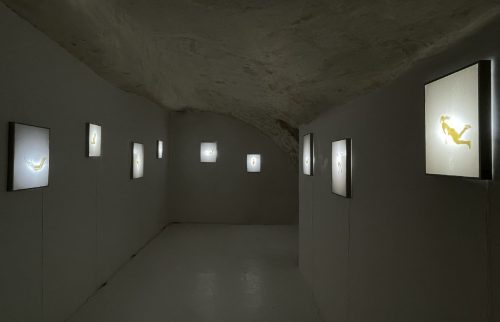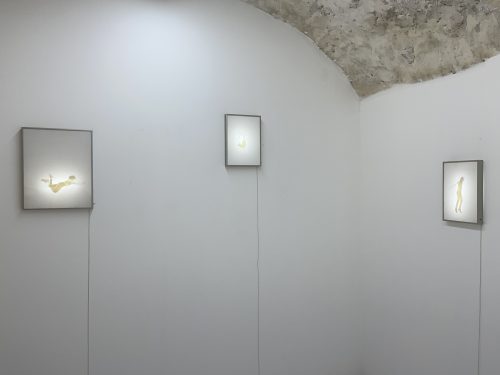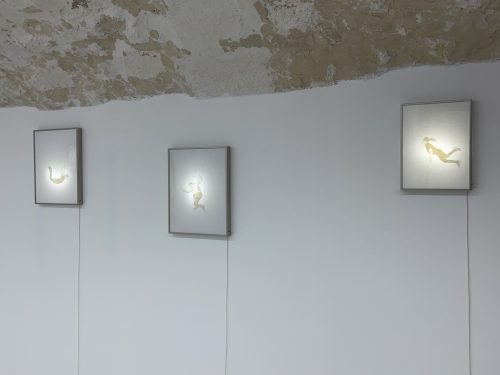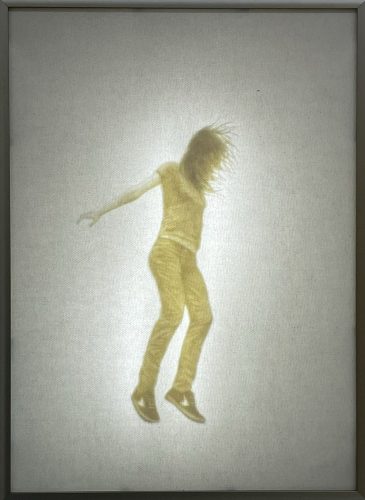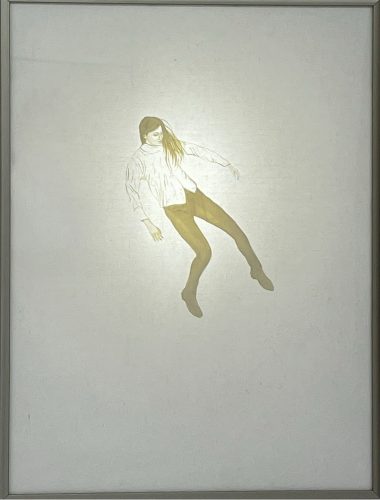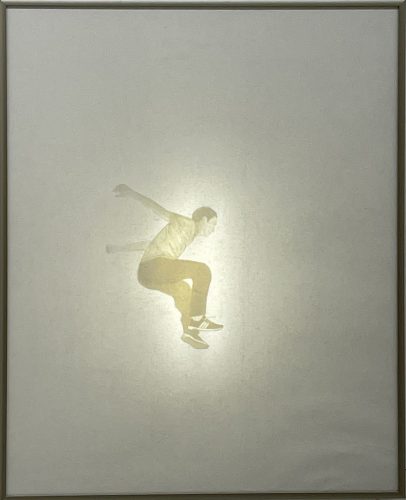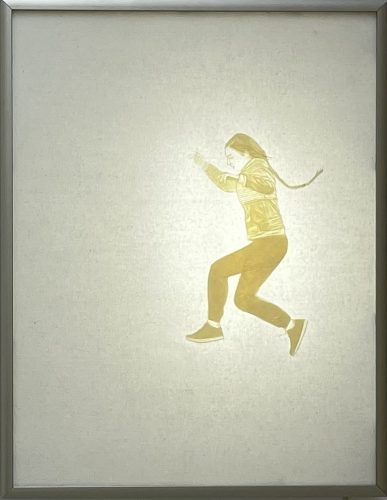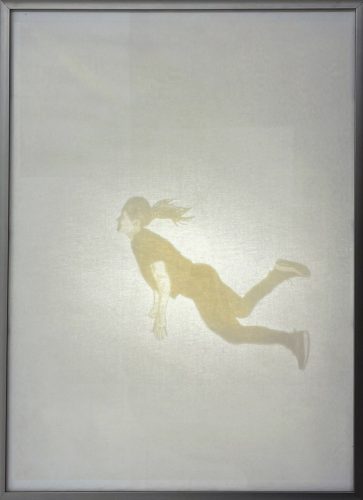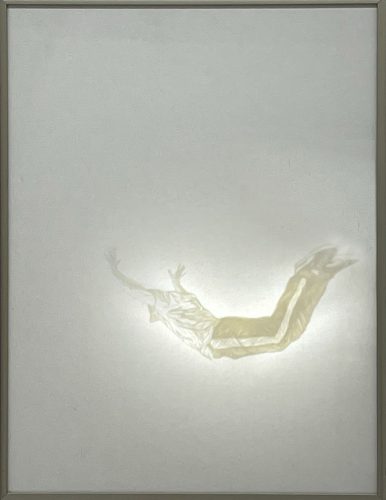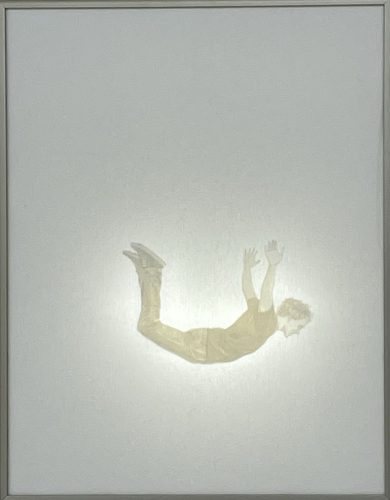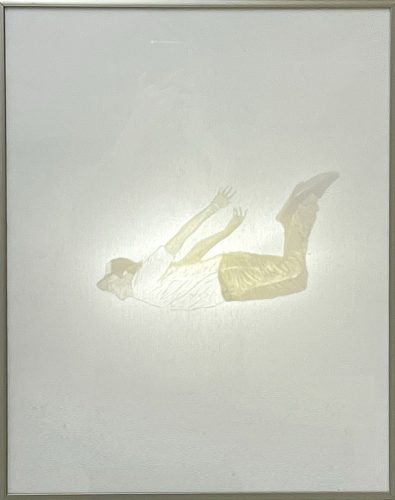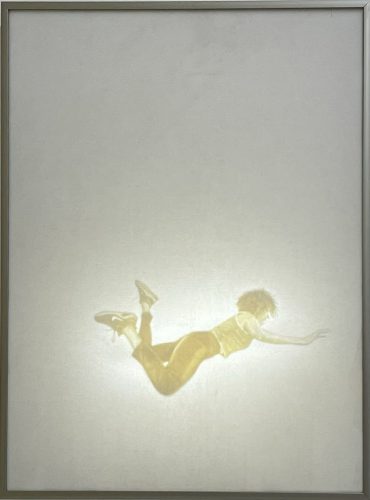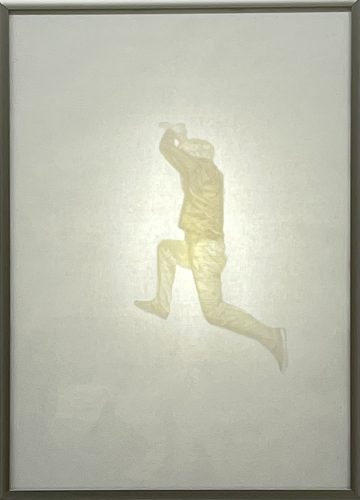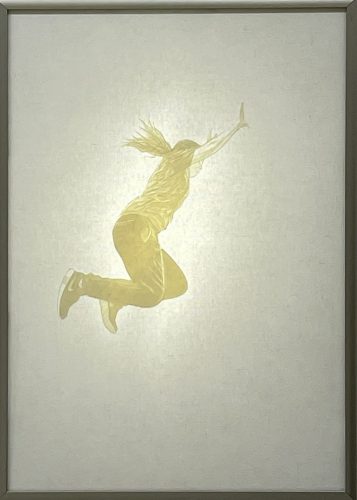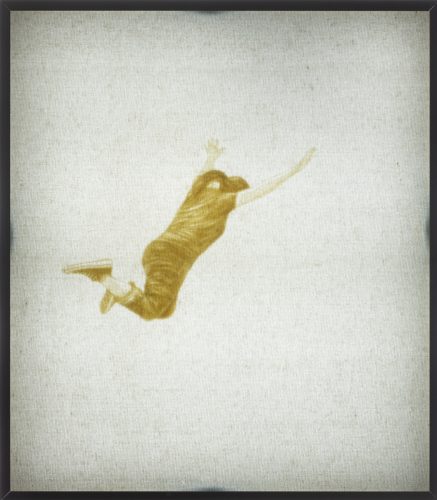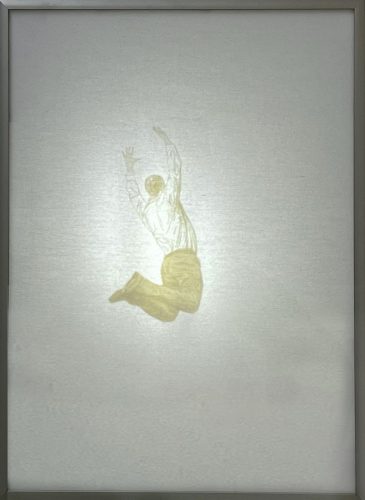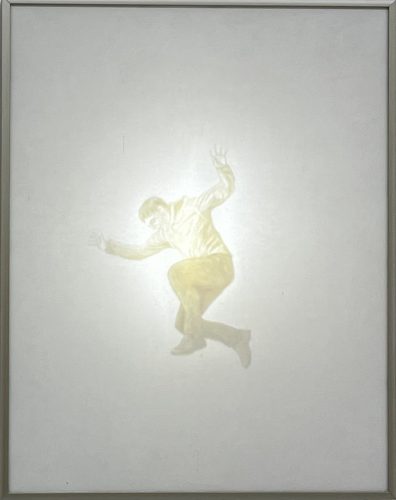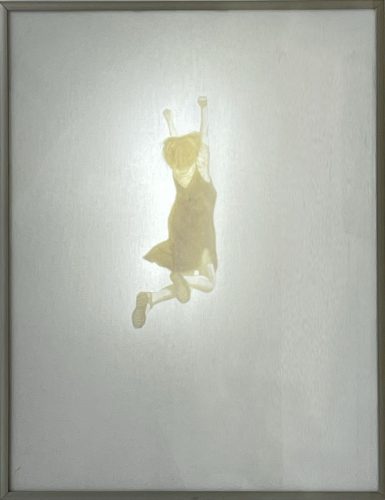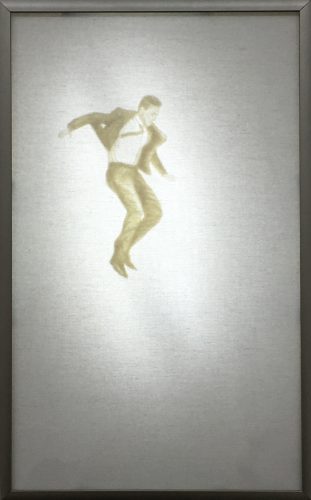Born in 1985 in Bettembourg in Luxemburg and living currently in Santiago de Chile, in the country of his origins, since 2010 the artist has seen his style grow to use a more than original medium: masking tape.
Like a surgeon, he operates his works with a scalpel, cutting characters with precision to examine this symptom of light that is shadow.
The familiar and spectral silhouettes of his series Es Como Si Non Existéramos for Sobering Galerie already impressed spectators by his technical mastery, but the naturalistic meticulousness employed for the creations of his new solo-show, Flying away, strikes the viewer in a new way.
The crowd dispersed to reveal only men and women, individualized, immobilized in the air, marking the ambiguity between falling and levitating.
At the border between drawing and sculpting, going so far as to evoke the grisailles of the Renaissance or the sinopie of Ancient frescoes, his aggregates of masking tape create shapes and give birth to meticulously executed characters. In the words of Ingres, “The simpler the lines and shapes are, the more beauty and strength there is.”
If this formal realistic work commands respect, it is his conceptual research around light that distinguishes it, especially in this last exhibition.
Like Eugène Carrière, whose paintings allowed bodies and faces to extricate themselves from a coppery mist, it is thanks to lighting that Carlos Rivera releases his floating men. It is thus through a soft glow that the volume appears to us, that the shadow lets a tangible materiality emanate.
This important paradox to him – that of “the darkness of light” – thus manifests itself.
It seems today that we have forgotten the poetry that emanates from the darkness to retain only the fear. In 2015, however, as a reaction, Carlos Rivera said to the press: “We were brought up to stay away from the shadows, which have lost their meaning and which could also say many things about us. Today we are wary of it, when we should be wary of the hypervisuality and the excess of light that there is in contemporary society.”
The iconographic universe of the artist lies in the search for beauty extricated from everyday life, “snatching its epic side from life” to quote Baudelaire, and this with a few means. Carlos Rivera understands his creations as spectra, “fantasms” to be related to the Spanish translation. The invisible is intended to be dense, enlightened literally and figuratively by the light in its boxes.
From these floating bodies take shape a free fall, a syncope in the modern world, or an elevation, a tearing away from the earth and its laws.
